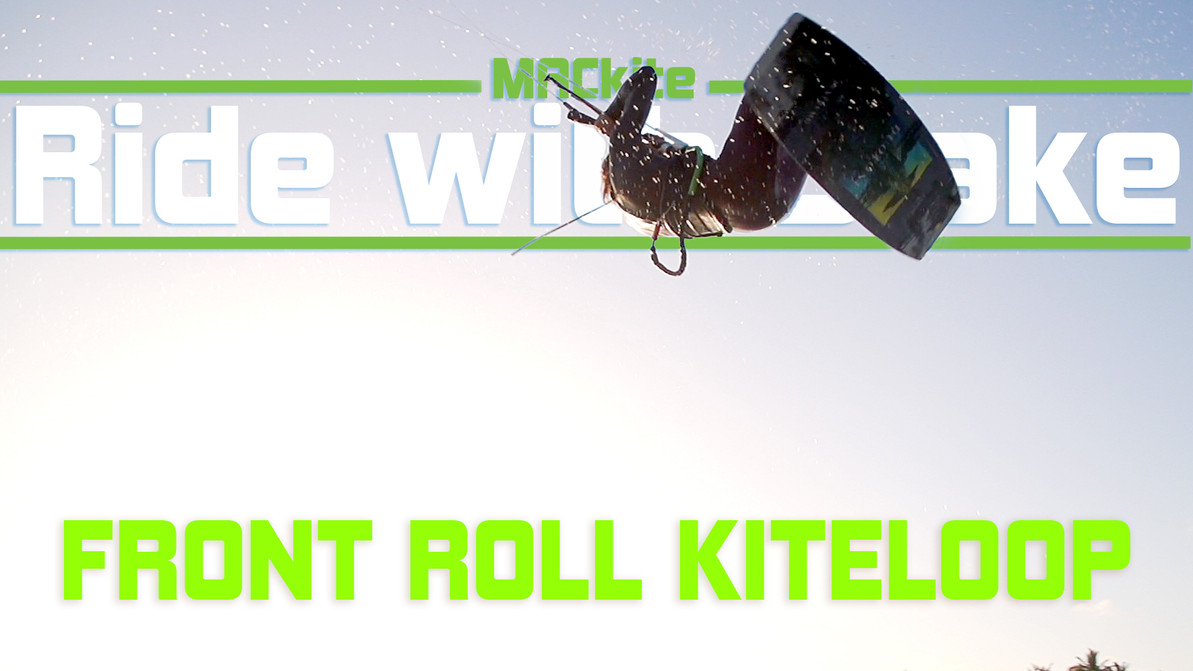Kiteloop Front Roll: Ride with Blake
Today we are going to go over how to do a Kiteloop Front Roll.
This trick is a fun one. People call it a front roll kiteloop and Ruben Lenten coined this trick as a Boogie loop. I would call a massive mega loop front roll a boogie and an average one a front roll kiteloop. It doesn’t really matter what it’s called because it’s the same thing so call it what you like. This trick feels strange at first because you and the kite are rotating in opposite directions. However once you get used to the feeling, it feels really smooth and natural. 
We recommend you download the attached PDF on your phone. Check it before your next session!
This is one of our more advanced tutorials on this list so make sure you are ready. Have kiteloops, front rolls and back roll kiteloops on lock before attempting this one. If you are feeling confident, get ready for one of the coolest feeling loop based tricks you can do!
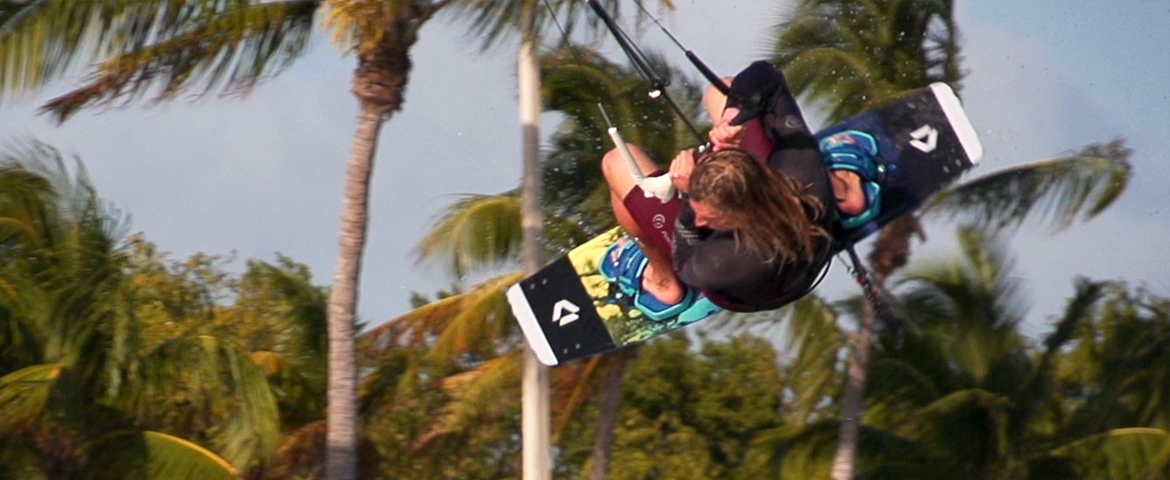
Do a lot of front rolls first
Step One- Master the Front Roll
If you are going to try front roll kiteloops, I’d recommend getting comfortable with your inverted front rolls first. Having control over your rotation in the air is important, once the kite starts yanking you around you’ll want to have the muscle memory in order to loop it without thinking of the flip. The more you invert the front roll the cooler the feeling. So pop and jump, bringing the front knee to your chest, dropping and twisting forward with your shoulders and head. Kick your feet overhead and pull the loop.
The rotation is going to be the same as a regular front roll but way more intense as the kite pulls your forward. You need to build up some serious muscle memory first and be a true master of the front roll before adding the loop.
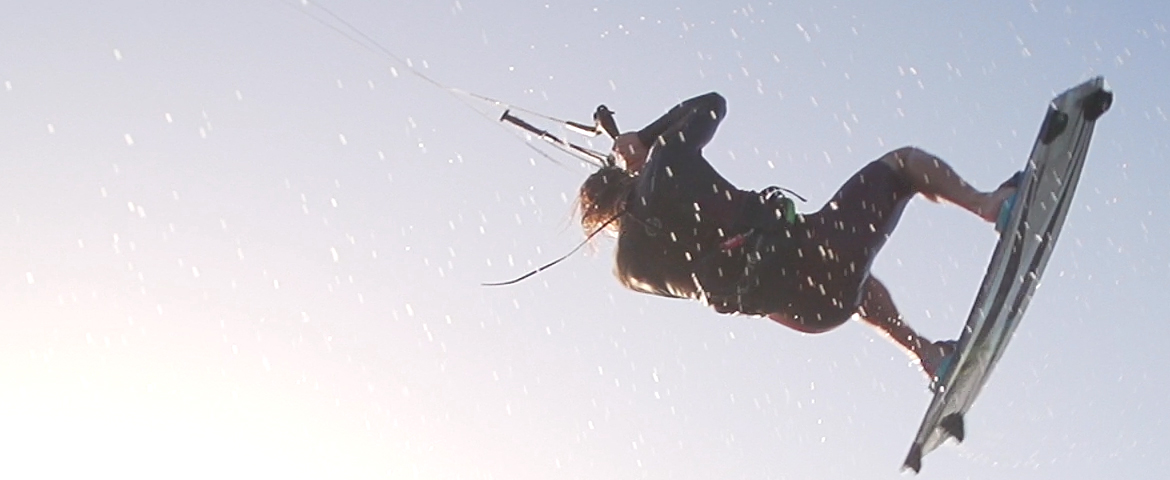
Timing is important
Step Two- Loop at the Apex
Timing is important. You don't want to loop too early and get pulled. You should be in control and have a little height when you initiate the kite loop. This step is pure commitment, flipping one way, looping the other way, completely blind to the kite. Pull in hard on your back hand and push forward with your front hand for safe measures. The faster the kite loops around the quicker your body will spin around.
The reason you need to do this is that if you don't pull hard and complete the loop, your kite will just crash on the water and bring you with it.
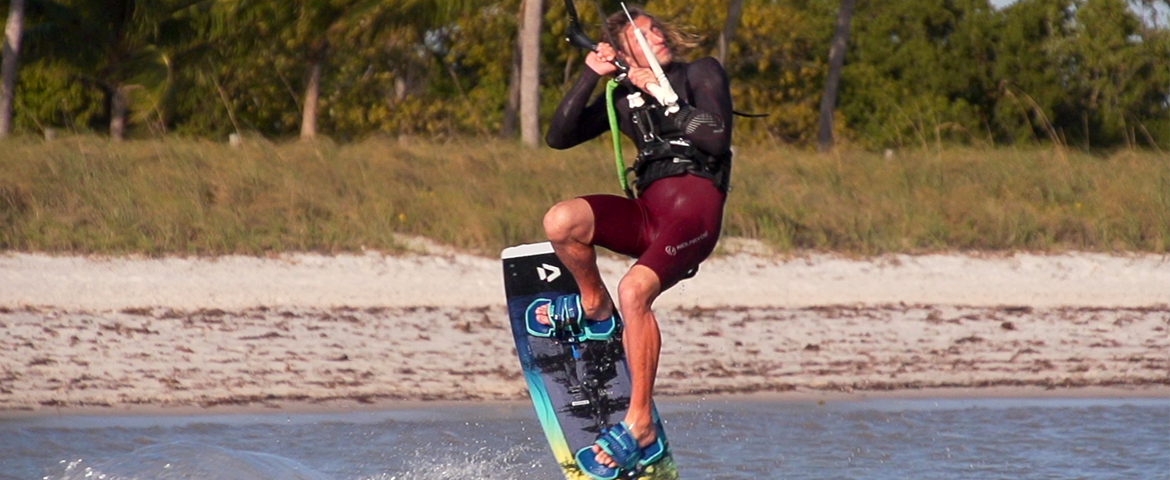
Tuck that knee!
Step Three- Tuck that Knee
Keeping your front knee tucked throughout this trick will help contain your rotation and pull you into a smooth rotation. If your legs are extended the loop can throw you off axis and disorientate you.
Staying small and tucked throughout the roll will give you control. Keeping control is key and having your back leg tweaked will give you total control and correction. Land flat but prepare to edge once you have control
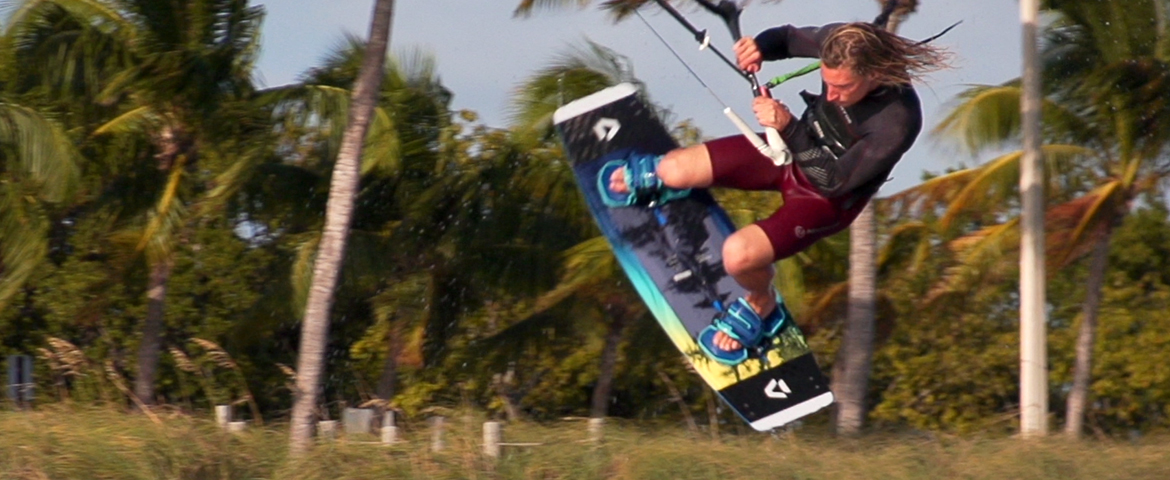
Spot your landing
Step Four- Look at your landing
Spot your landing over the back shoulder, waiting for the pull of the kite, rotating your body and then coming around for landing. You should have your front ear tucked into your armpit and be looking over your back shoulder. Keep your eyes open and wait to spot the landing as you come around.
Where your eyes are looking, the body will follow. This is important for every trick but especially when throwing a kiteloop. Aligning your body up with the landing is important just like it is in an airplane. The more of an angle you come down at the harder the landing will be. Absorb on impact and have your board flat with your body weight centered over it.
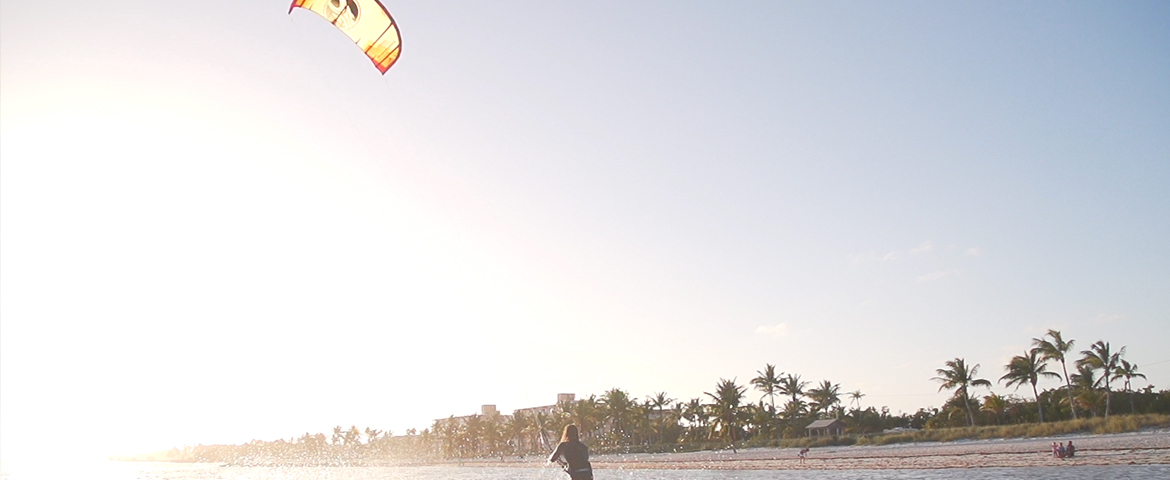
Step Five- Sheet out
Just like all of the other loops sheeting out is important for a nice and smooth landing. Sheeting out on the bar acts like a parachute and catches you as you’re falling. Holding in on the bar will keep power in the kite pulling you harder downwind. The kite will open up and shoot above your head as you come down to the water. Right before you touch down pull in on your front hand so you don’t outrun the kite and it pulls you into the landing.
As always, land flat with your nose pointing downwind for safety.
Recommended Gear
When it comes to kiteloops, most kites will get the job done, especially for beginners. That said, some gear does work much better than others. A great rule of thumb is to learn on something no bigger than a 11 or even 10 meter. Larger kites will still loop but they are much slower, more difficult, and not very effective. There are several categories of kites that cater to different styles of riding. We much prefer the freestyle kites in most brands' line-ups. That said, many of the freeride kites work. To demonstrate this, we used the Cabrinha Switchblade 11 to film the majority of this list.
For intermediate to advanced kiteboarders
The fastest, most powerful kites for loops fall in the crossover category. These are three-strut C Hybrid kites designed specifically with kitelooping in mind.
Duotone Dice - Cabrinha FX - Liquid Force NV - Naish Dash - Cabrinha Switchblade 11m
The Switchblade is an outlier on this list. It's technically a freeride kite. The FX is superior in speed and arc, yet the Switchblade packs some power. We chose to film with this kite due to its powerful low end. As we were filming in the Keys, the wind could be quite light. We don't recommend going larger than the 11 for kiteloops unless you are an advanced kiteboarder.
For newer to intermediate kiteboarders
These are faster freeride kites. They're not designed specifically for kiteloops, but as they are all faster they work quite well. They also tend not to be as powerful when looping. The RPM might be the most powerful on this list.
Duotone Evo - Cabrinha Moto - Slingshot RPM - Naish Pivot
These are just a few kites that we prefer. There are plenty of good options beyond these. If you already have a freeride kite and are new to loops, switching to a crossover kite will not make or break your progress. It will, however, help. If you are a more advanced rider, chances are you've already made the switch to something designed with loops in mind. Either way you go, we encourage you to simply have fun with it. Kiteloops can be scary and, like any kiteboarding trick, they can be frustrating. Take your time and learn to enjoy the process.
-Written and produced by Blake Olsen & Ryan (Rygo) Goloversic.
 Blake Olsen
Blake Olsen
A Michigan boy through and through (even though he was born in Saudi Arabia), Blake is a youth with a lifetime of experiences and adventures. Not only that, he's passionate about sharing his zest for life with others. He is proficient at many fields, including kiteboarding and acting as concierge to any who simply ask. Looking for an adventure? Well, Blake is your guy. From sailing the Gulf and the Caribbean to backpacking Hawaii and Southeast Asia, he knows his stuff and can make your vacation into an adventure.
Webpage: BlakeTheOlsen.com
Instagram: @BlakeTheOlsen
 Ryan (Rygo) Goloversic
Ryan (Rygo) Goloversic
Just a dude from a kite shop testing all the gear one session at a time.
Many people dream of quitting their job, traveling the world and pursuing their passions. Rygo is one of those people who pulled the trigger. A few years into a postal career, he decided to change everything and travel as a kiteboarder, freelance videographer & writer. His mission is to help people and share the stoke. Get out there and kite!
Producer of: Ride with Blake I Sessions I Versus I Destinations I Foil Fridays
Recent Posts
-
Kiteboarding | Crafting the Harlem Force Kite with Sustainability and Performance
Unparalleled Performance Meets Unmatched Sustainability The kiteboarding industry is on …24th Apr 2024 -
Duotone Ventis 2025 | What's New?
If you're familiar with Duotone's Ventis, you know its specialty is freeriding in light wind …23rd Apr 2024 -
Duotone Ventis D/LAB 2025 Overview
If you ride in an area with multiple light wind days and need a wing that'll let you get o …23rd Apr 2024

